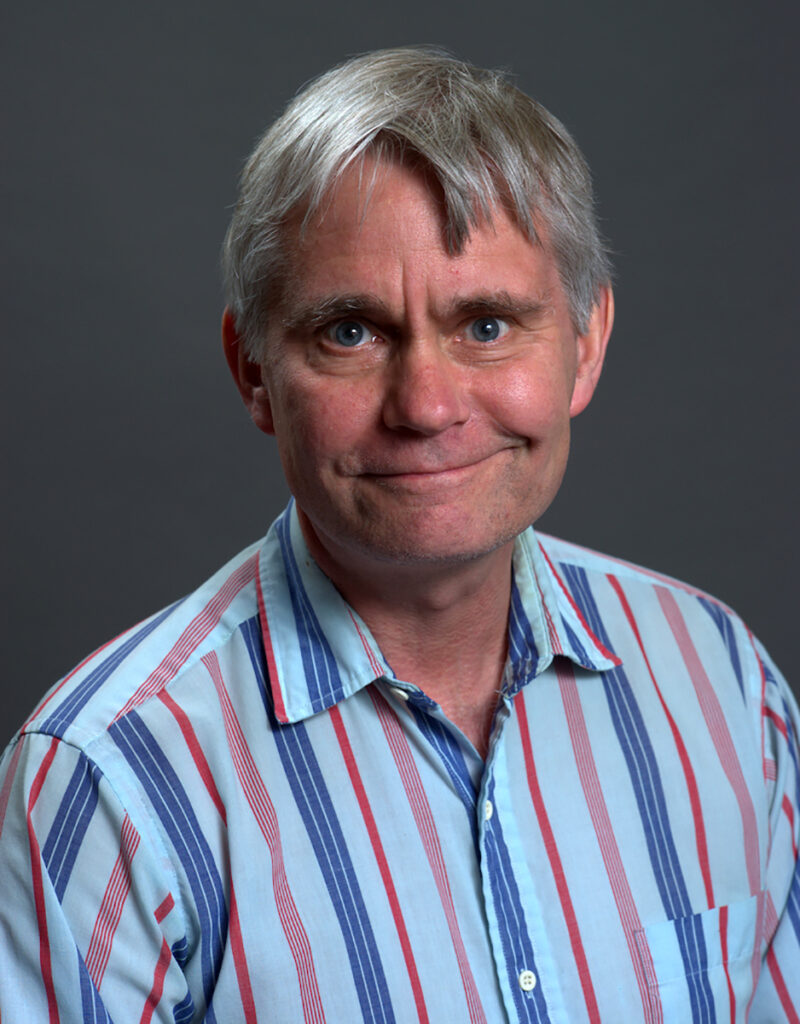
John Cannon
Associate Professor of Molecular Microbiology & Immunology, Genetics Area Program Chair
Molecular Microbiology & Immunology,
cannonj@missouri.edu
(573) 882-2780
Fields of Interest:
- Signal transduction
- Molecular genetics
- Protein molecular dynamics
Education:
- B.S. 1978, University of Illinois-Urbana
- Ph.D. 1983, University of Wisconsin-Madison
- Post-doc 1987, University of Pennsylvania
Research Statement
Protein phosphorylation is a well-studied post-translational modification that regulates many aspects of protein function. Dr. Cannon uses a combination of powerful yeast molecular genetic techniques and computer simulations to decipher protein phosphorylation regulation from the pathway to atomic level descriptions. Dr. Cannon uses classical yeast genetics to identify protein phosphatase-1 (PP1) and a critical PP1 regulator, I2, based on their control of glycogen metabolism. Further biochemical analysis showed that I2 modulates PP1 function in yeast like all eukaryotic cells by its phosphorylation. I2 phosphorylation activates the PP1-I2 protein phosphatase activity without dissociation. Computer simulations of PP1-I2 molecular dynamics provide atomic level data about how phosphorylation in the unstructured I2 communicates with the I2 region near PP1 active site. This analysis has uncovered a novel method of phosphorylation control that does not exploit the phosphate charge.
Publications
Nelson AD, Wang L, Laffey KG, Becher LRE, Parks CA, Hoffmann MM, Galeano BK, Mangalam A, Teixeiro E, White T, Schrum AG, Cannon JF, Gil D. Rigid crosslinking of the CD3 complex leads to superior T cell stimulation. Front. Immunol. 15:1434463. doi.org/10.3389/fimmu.2024.1434463
Cannon, JF. Novel phosphorylation-dependent regulation in an unstructured protein. Proteins 88:366-384 (2020) https://doi.org/10.1002/prot.25812
Ghosh, A and J Cannon. 2013. Analysis of protein phosphatase-1 and aurora protein kinase suppressors reveals new aspects of regulatory protein function in Saccharomyces cerevisiae PLoS One. 2013 Jul 22;8(7):e69133. https://journals.plos.org/plosone/article?id=10.1371/journal.pone.0069133
Cannon, JF. 2012. How phosphorylation activates the protein phosphatase-1 • inhibitor-2 complex. Biochim Biophys Acta. 1834:71-86. https://doi.org/10.1016/j.bbapap.2012.09.003
Cannon, JF. 2010. Function of protein phosphatase-1, Glc7, in Saccharomyces cerevisiae. Adv. App. Microbiol. 73: 27-58. https://www.sciencedirect.com/science/article/pii/S0065216410730021
Thamburan, S., Klaasen, J., Mabusela, WT, Cannon JF, Folk, W, and Q Johnson. 2006. Tulbaghia alliacea phytotherapy: A potential anti-infective remedy for candidiasis. Phytother Res 20: 844-850. https://onlinelibrary.wiley.com/doi/10.1002/ptr.1945
Tan YS, PA Morcos, and JF Cannon. 2003. Pho85 phosphorylates the glc7 protein phosphatase regulator glc8 in vivo. J Biol Chem. 278(1):147-153. https://www.sciencedirect.com/science/article/pii/S0021925819312529
Nigavekar SS, YS Tan, and JF Cannon. 2002. Glc8 is a glucose-repressible activator of Glc7 protein phosphatase-1. Arch Biochem Biophys. 404(1):71-79. https://www.sciencedirect.com/science/article/pii/S000398610200231X
Nigavekar S and JF Cannon. 2002. Characterization of genes that are synthetically lethal with ade3 or leu2 in Saccharomyces cerevisiae. Yeast. 19:115-122.
De Silva-Udawatta MN and JF Cannon. 2001. Roles of trehalose phosphate synthase in yeast glycogen metabolism and sporulation. Mol. Micro. 40:1345-1356.
Zheng J, M Khalil and JF Cannon. 1999. Glc7p protein phosphatase inhibits expression of glutamine-fructose-6-phosphate transaminase from GFA1. J. Biol. Chem. 275:18070-18078.
Ramaswamy N.T., L. Li, M. Khalil, JF Cannon. 1998. Regulation of yeast glycogen metabolism and sporulation by Glc7p protein phosphatase. Genetics. 149(1):57-72.
Connor J.H., H.N. Quan, N.T. Ramaswamy, L. Zhang, S. Barik, J. Zheng, JF Cannon, E.Y. Lee, S. Shenolikar. 1998. Inhibitor-1 interaction domain that mediates the inhibition of protein phosphatase-1. J Biol Chem. 273(42):27716-27724.
Dalley, B.K. and JF Cannon. 1996. Novel, activated RAS mutations alter protein-protein interactions. Oncogene. 13(6):1209-1220.
Cannon JF, Pringle JR, Fiechter A, Khalil M. Characterization of glycogen-deficient glc mutants of Saccharomyces cerevisiae. Genetics 136:485-503 (1994). https://academic.oup.com/genetics/article/136/2/485/6012188
Thon VJ, Khalil M, Cannon JF. Isolation of human glycogen branching enzyme cDNAs by screening complementation in yeast. J Biol Chem 268:7509-7513 (1993). https://www.sciencedirect.com/science/article/pii/S002192581853204X
Cannon JF, Tatchell K. Characterization of Saccharomyces cerevisiae genes encoding subunits of cyclic AMP-dependent protein kinase. Mol Cell Biol 7:2653-2663 (1987). https://pmc.ncbi.nlm.nih.gov/articles/PMC367881/
Cannon JF, Gibbs JB, Tatchell K. Suppressors of the ras2 mutation in Saccharomyces cerevisiae. Genetics 113:247-264 (1986). https://academic.oup.com/genetics/article/113/2/247/5996958
Sullivan M, Cannon JF, Webb FH, Bock RM. Antisuppressor mutation in Escherichia coli defective in the biosynthesis of 5-methylaminomethyl-2-thiouridine. J Bacteriol 161:368-376 (1984)
